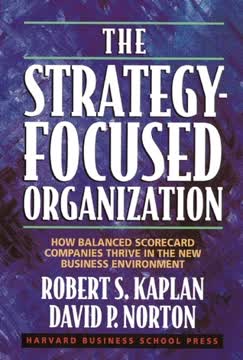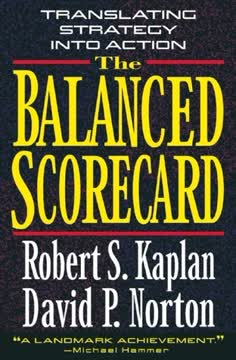Key Takeaways
1. The Balanced Scorecard aligns organizations with strategy
The Balanced Scorecard provides a framework for describing and communicating strategy in a consistent and insightful way.
Strategic alignment. The Balanced Scorecard translates an organization's vision and strategy into a comprehensive set of performance measures that provides the framework for a strategic measurement and management system. It emphasizes achieving financial objectives, but also includes the performance drivers of these financial objectives. The scorecard measures organizational performance across four balanced perspectives: financial, customers, internal business processes, and learning and growth.
Breakthrough performance. Organizations that have implemented the Balanced Scorecard report significant benefits:
- Clarified and updated strategy
- Aligned organization with strategy
- Linked strategic objectives to long-term targets and annual budgets
- Identified and aligned strategic initiatives
- Conducted periodic performance reviews to learn about and improve strategy
By aligning the entire organization around strategy, the Balanced Scorecard enables companies to achieve dramatic performance improvements in revenue growth, productivity, and efficiency. It provides a framework for describing how intangible assets like employee skills, customer relationships, and innovation drive sustainable value creation.
2. Translate strategy into operational terms
Strategy maps and Balanced Scorecards constitute the measurement technology for managing in a knowledge-based economy.
Strategy maps. To implement strategy, organizations must translate it into specific objectives and measures. Strategy maps provide a visual representation of the cause-and-effect relationships among the components of an organization's strategy. They show how an organization plans to convert its initiatives and resources - including intangible assets such as corporate culture and employee knowledge - into tangible outcomes.
Key components of strategy maps:
- Financial perspective (e.g. revenue growth, productivity)
- Customer perspective (e.g. customer value proposition)
- Internal process perspective (e.g. operations, customer management, innovation)
- Learning and growth perspective (e.g. human capital, information capital, organizational capital)
Balanced Scorecard. The Balanced Scorecard translates the strategy map into specific objectives, measures, targets, and initiatives for each perspective. This provides a comprehensive view of organizational performance aligned with strategy. By making strategy explicit and measurable, the Balanced Scorecard enables organizations to systematically implement and evaluate their strategies.
3. Align the organization to create synergies
Synergy arises from excellent interactions among business units, and these potential interactions need to be explicitly recognized in the strategies—and the scorecards—of the individual units.
Organizational alignment. Most organizations consist of multiple business units and shared service departments. To maximize organizational effectiveness, the strategies and scorecards of all these units must be aligned and linked to each other. This creates synergy by integrating the activities of otherwise segregated units.
Methods for creating alignment:
- Develop corporate-level strategy and scorecard
- Cascade scorecards to business units
- Link shared service units to business unit and corporate strategies
- Align external partners
Value creation. Alignment enables the whole organization to become greater than the sum of its parts. By explicitly defining how units work together to create differentiated value, organizations can focus resources on the highest-impact opportunities for synergy and collaboration. This strategic integration is key to creating sustainable competitive advantage.
4. Make strategy everyone's everyday job
Strategy must be executed at all levels of the organization. People must change their behaviors and adopt new values.
Strategic awareness. Organizations must develop a comprehensive communication program to create awareness and understanding of strategy throughout the workforce. This involves using multiple channels like town hall meetings, brochures, newsletters, training programs, and executive messaging to continually reinforce strategic priorities.
Personal objectives. Employees at all levels should develop personal objectives and scorecards that link to higher-level organizational objectives. This creates line-of-sight between individual roles and overall strategy. Methods include:
- Cascading scorecards to departments and teams
- Developing personal scorecards for individuals
- Integrating strategic objectives into goal-setting processes
Incentive alignment. Compensation and reward systems should be linked to scorecard performance to motivate strategic behavior. This can involve team and individual incentives tied to achieving targets on strategic measures. By aligning rewards with strategy, organizations reinforce the importance of strategic priorities in day-to-day decision making.
5. Make strategy a continual process
Strategy must be a continual process. The art of leadership is to delicately balance the tension between stability and change.
Strategic planning. Organizations should integrate strategy into the budgeting process by using the Balanced Scorecard to set priorities and allocate resources. This links long-term strategic objectives with short-term budgets and operational plans. Key steps include:
- Set stretch targets for scorecard measures
- Identify strategic initiatives to close performance gaps
- Allocate resources to strategic initiatives
- Establish milestones for initiatives
Strategic learning. Regular strategy review meetings should be held to assess progress and adapt strategy based on new information. These meetings use scorecard data to test and validate strategic hypotheses. Key elements:
- Review strategy map cause-and-effect relationships
- Analyze correlations between measures
- Discuss emerging opportunities and threats
- Adapt strategy as needed
By making strategy a continual process, organizations can rapidly respond to changes in the competitive environment while maintaining focus on long-term strategic objectives.
6. Mobilize change through executive leadership
Executives of adopting organizations were using the Balanced Scorecard to align their business units, shared service units, teams, and individuals around overall organizational goals.
Executive sponsorship. Successful Balanced Scorecard implementation requires active leadership from the executive team. Leaders must create a sense of urgency, develop a clear vision for change, and continuously reinforce the importance of the strategic management system. Key leadership actions:
- Communicate the need for strategic change
- Build the guiding team to lead the effort
- Create and communicate the change vision
- Empower employees to act on the vision
- Generate short-term wins to build momentum
- Consolidate gains and anchor new approaches
Governance. Executives should establish new governance processes centered on the Balanced Scorecard. This involves using the scorecard as the agenda for management meetings, decision making, and resource allocation. By putting strategy at the center of management processes, leaders reinforce its importance throughout the organization.
7. Avoid common pitfalls in Balanced Scorecard implementation
We can learn from failure. In Chapter 14, we will discuss the pitfalls that led to these missed opportunities.
Implementation challenges. While many organizations have successfully implemented the Balanced Scorecard, others have struggled to realize its full potential. Common pitfalls include:
- Lack of executive sponsorship and involvement
- Keeping the scorecard at the top
- Viewing it as a one-time event rather than an ongoing process
- Using only lagging indicators
- Failing to link the scorecard to key management processes
Keys to success. To avoid these pitfalls, organizations should:
- Ensure active executive leadership throughout the process
- Cascade the scorecard throughout the organization
- Use the scorecard as a framework for continual strategic learning
- Balance leading and lagging indicators
- Integrate the scorecard into planning, budgeting, and review processes
By learning from both successes and failures, organizations can develop robust implementation approaches that create sustainable strategic focus and alignment. The Balanced Scorecard is a powerful tool, but realizing its full potential requires careful design and execution.
Last updated:
FAQ
1. What is The Strategy-Focused Organization by Robert S. Kaplan about?
- Core concept: The book introduces the Balanced Scorecard as a strategic management system that helps organizations translate strategy into operational terms and align the entire organization to strategy.
- Strategy execution focus: It emphasizes that successful execution, not just strategy formulation, is the key to organizational success.
- Comprehensive framework: Kaplan and Norton provide a framework for linking strategy, measurement, communication, and incentives to drive performance.
- Real-world application: The book draws on case studies from various industries to illustrate how organizations can thrive in the new business environment.
2. Why should I read The Strategy-Focused Organization by Robert S. Kaplan?
- Addresses execution challenges: The book tackles the high failure rates in strategy implementation and offers a proven framework to overcome them.
- Practical guidance: Readers gain actionable insights into translating strategy into operational terms, aligning organizations, and engaging employees.
- Universal applicability: The Balanced Scorecard is shown to work in large and small, public and private, for-profit and nonprofit organizations.
- Leadership focus: It highlights the critical role of executive leadership in mobilizing change and sustaining a strategy-focused culture.
3. What are the key takeaways from The Strategy-Focused Organization by Robert S. Kaplan?
- Execution trumps strategy: Effective strategy execution is often more important than the quality of the strategy itself.
- Balanced Scorecard evolution: The Balanced Scorecard has evolved from a measurement tool to a comprehensive strategic management system.
- Five guiding principles: The book outlines five principles for becoming a strategy-focused organization, including translating strategy, alignment, making strategy everyone’s job, continual process, and leadership.
- Case study insights: Real-world examples demonstrate how organizations achieved breakthrough performance by focusing on execution and alignment.
4. What is the Balanced Scorecard as defined in The Strategy-Focused Organization by Robert S. Kaplan?
- Strategic management tool: The Balanced Scorecard translates an organization’s vision and strategy into a coherent set of performance measures.
- Four perspectives: It covers financial, customer, internal business processes, and learning and growth perspectives.
- Alignment and motivation: The tool helps align business units, shared services, and employees to the strategy by linking objectives and measures in a cause-and-effect relationship.
- Performance management: It enables organizations to monitor progress, communicate strategy, and drive continuous improvement.
5. What are the five principles of a Strategy-Focused Organization according to Robert S. Kaplan?
- Translate strategy to operational terms: Use tools like strategy maps and Balanced Scorecards to make strategy actionable.
- Align the organization to the strategy: Coordinate business units and employees around common strategic themes to create synergy.
- Make strategy everyone’s everyday job: Communicate strategy broadly and link personal objectives and incentives to strategic outcomes.
- Make strategy a continual process: Integrate strategy management with budgeting and planning, using regular reviews and learning loops.
- Mobilize change through executive leadership: Senior executives must actively drive cultural change and embed strategy into the management system.
6. How does the Balanced Scorecard help with strategy execution in The Strategy-Focused Organization?
- Beyond financial measures: It supplements traditional financial metrics with nonfinancial measures that act as lead indicators of future performance.
- Cause-and-effect logic: The Balanced Scorecard links intangible assets and operational drivers to financial outcomes via strategy maps.
- Cascading and alignment: Scorecards are cascaded from corporate to individual levels, ensuring everyone’s activities contribute to strategic objectives.
- Motivation and accountability: Linking scorecards to incentives fosters focus and accountability throughout the organization.
7. What is a strategy map and why is it important in The Strategy-Focused Organization by Robert S. Kaplan?
- Visual representation: A strategy map depicts the cause-and-effect relationships among financial, customer, internal process, and learning and growth objectives.
- Clarifies assumptions: It makes explicit the hypotheses about how intangible assets and processes drive desired outcomes.
- Foundation for scorecard design: Strategy maps provide a consistent framework for describing strategy, facilitating communication and alignment.
- Enables testing and refinement: Organizations can use strategy maps to test and refine their strategic hypotheses over time.
8. What are the four perspectives of the Balanced Scorecard in The Strategy-Focused Organization?
- Financial perspective: Focuses on growth, profitability, and risk from the shareholder’s viewpoint.
- Customer perspective: Defines the value proposition and targeted customer segments, measuring outcomes like satisfaction and retention.
- Internal business process perspective: Identifies critical processes that create and deliver customer value and drive financial results.
- Learning and growth perspective: Addresses intangible assets such as employee skills, information systems, and organizational climate.
9. How does The Strategy-Focused Organization by Robert S. Kaplan recommend making strategy everyone’s everyday job?
- Broad communication: Use town meetings, newsletters, intranet sites, and learning maps to create strategic awareness among all employees.
- Personal and team objectives: Align individual and team goals with strategic objectives through personal Balanced Scorecards or focused initiatives.
- Incentive systems: Link compensation to Balanced Scorecard measures to motivate and hold employees accountable for strategic success.
- Education and engagement: Provide training and resources to ensure employees understand and can contribute to the strategy.
10. How should organizations integrate the Balanced Scorecard with planning and budgeting according to The Strategy-Focused Organization?
- Step-down procedure: Translate strategy into Balanced Scorecard objectives, set stretch targets, and identify strategic initiatives.
- Resource allocation: Embed resource requirements for strategic initiatives into the annual budget, separate from operational expenses.
- Dynamic budgeting: Use rolling forecasts and flexible budgets to adapt to changing environments while maintaining strategic focus.
- Operational vs. strategic budgeting: Distinguish between activity-based budgeting for operations and discretionary resources for strategy.
11. What role does executive leadership play in mobilizing change in The Strategy-Focused Organization by Robert S. Kaplan?
- Creating urgency and vision: Leaders must communicate the need for change and inspire employees with a clear vision.
- Building leadership teams: Transform functional silos into cross-functional teams that support the strategy.
- Interactive control: Use the Balanced Scorecard as an interactive system to engage employees in dialogue, learning, and innovation.
- Sustaining momentum: Senior executives must maintain active involvement to drive cultural change and embed strategy into daily management.
12. What are common pitfalls in implementing the Balanced Scorecard from The Strategy-Focused Organization and how can they be avoided?
- Lack of senior commitment: Without active involvement from top executives, scorecard projects often fail.
- Poor design and process: Avoid too few or too many measures, lack of alignment, and treating the scorecard as a one-time event or IT project.
- Cultural and organizational issues: Ensure broad involvement, cascade the scorecard, and integrate it with compensation and management processes.
- Sustaining momentum: Regular reviews, leadership engagement, and continuous learning are essential to avoid stagnation and ensure long-term success.
Review Summary
The Strategy-Focused Organization receives mostly positive reviews, with readers praising its practical approach to implementing strategies using the Balanced Scorecard methodology. Many find it valuable for managers, executives, and entrepreneurs, highlighting its applicability in both private and public sectors. The book is commended for its case studies and insights on linking strategy to organizational performance. Some criticisms include repetition from previous works and a focus on large companies. Overall, reviewers appreciate the book's contribution to strategy execution and organizational alignment.
Similar Books

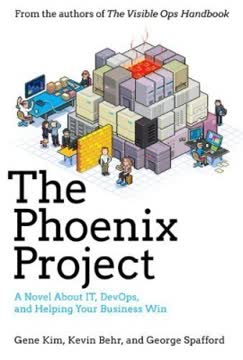
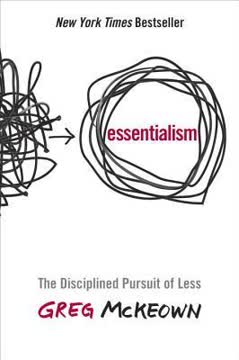
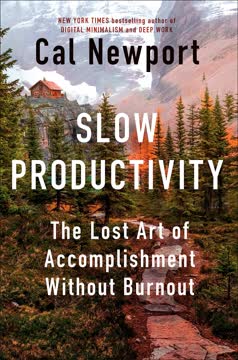

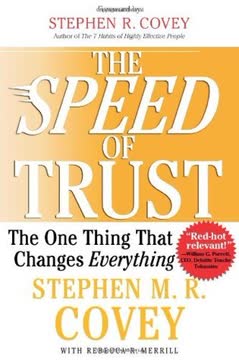
Download PDF
Download EPUB
.epub digital book format is ideal for reading ebooks on phones, tablets, and e-readers.
